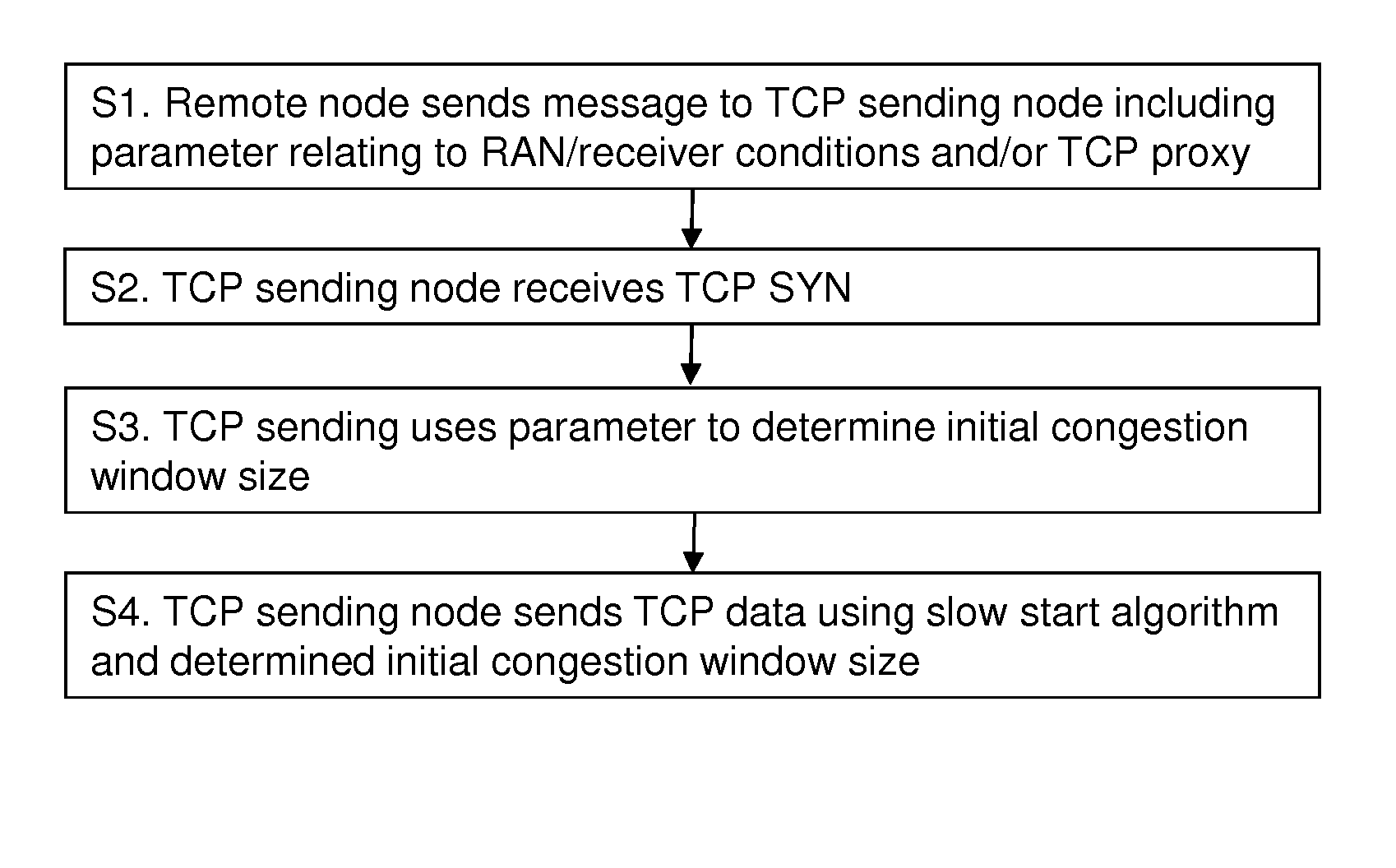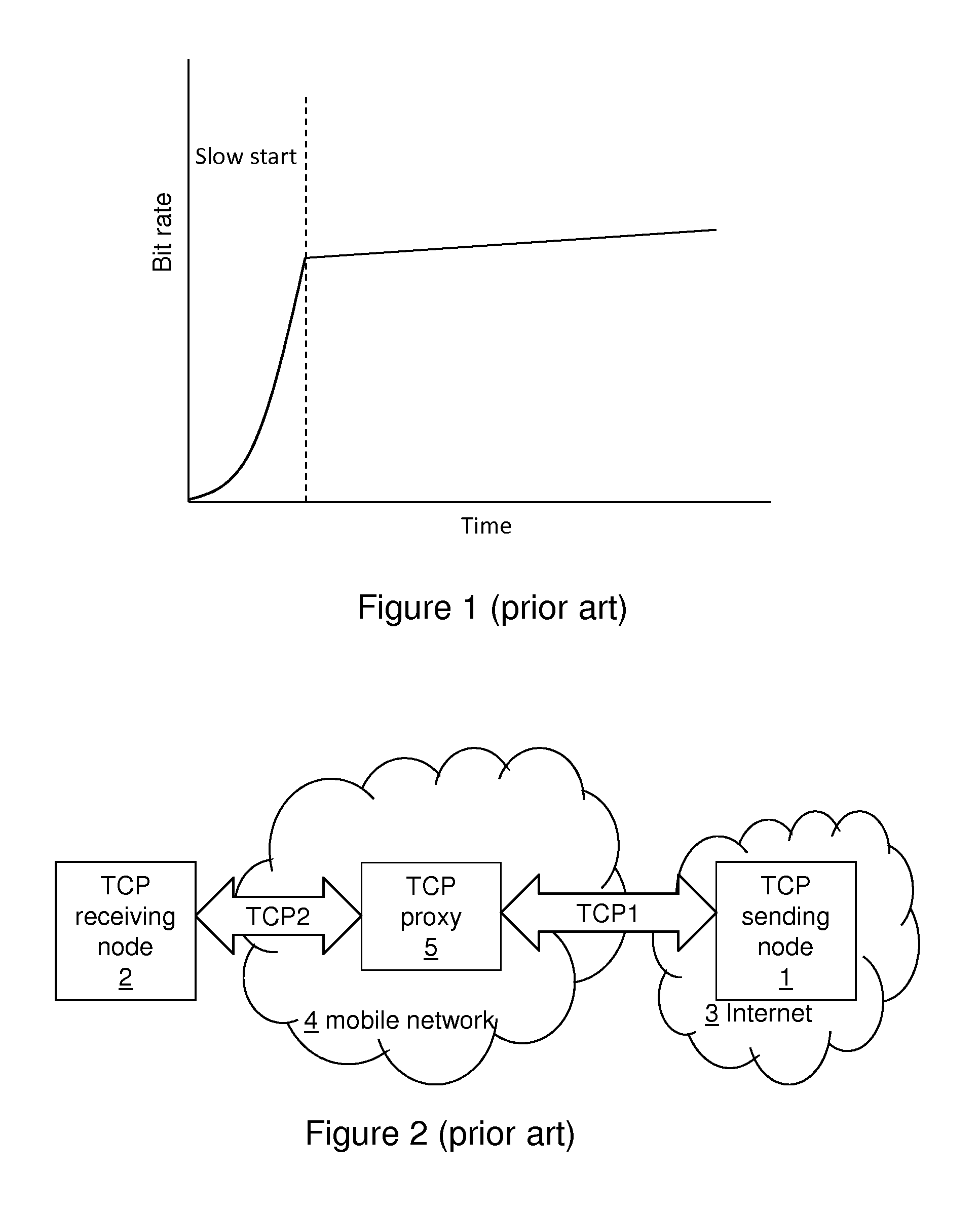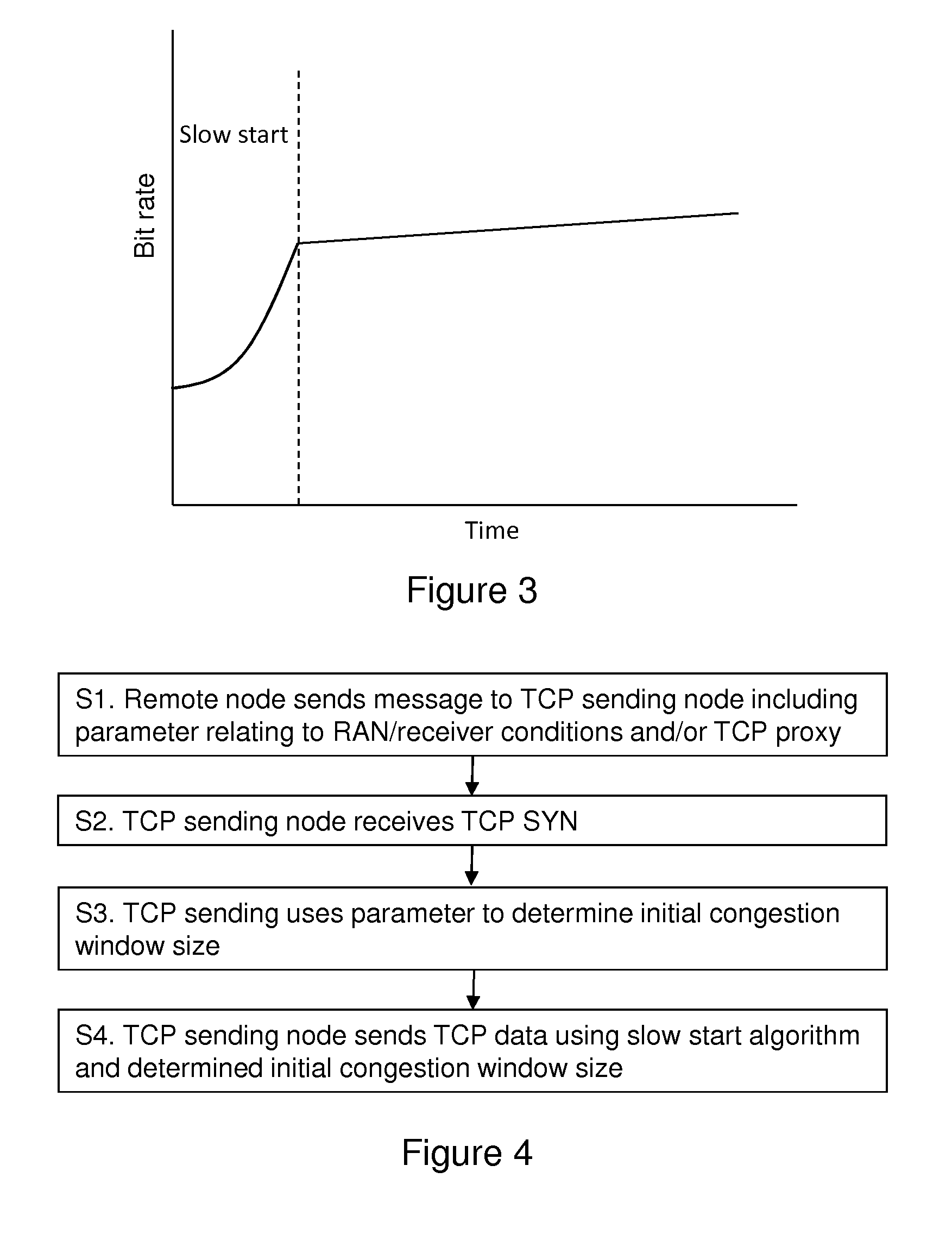Controlling a transmission control protocol window size
- Summary
- Abstract
- Description
- Claims
- Application Information
AI Technical Summary
Benefits of technology
Problems solved by technology
Method used
Image
Examples
Embodiment Construction
[0040]The terms TCP sending node 1 and TCP receiving node 2 are used herein to describe the endpoints for a TCP data stream. Note that in most cases, the TCP receiving node 2 will be attached to a mobile network 4 but it is envisaged that the TCP sending node 1 may be attached to a mobile network. It should also be noted that the TCP sending node 1 may be a TCP proxy 5 splitting the TCP connection into two or more legs.
[0041]The term “mobile network” is used herein to refer to both the Radio Access Network (RAN) and parts of the core network that are responsible for actions relating to access such as establishing bearers, handling QoE and QoS requirements, allocating IP addresses, handling subscription data and charging, and so on. While congestion is more likely to be encountered in the RAN rather than the core network, core network nodes may be able to monitor conditions in the RAN or other factors that may affect the initial permissible window size.
[0042]The TCP sending node 1 is...
PUM
 Login to View More
Login to View More Abstract
Description
Claims
Application Information
 Login to View More
Login to View More - R&D
- Intellectual Property
- Life Sciences
- Materials
- Tech Scout
- Unparalleled Data Quality
- Higher Quality Content
- 60% Fewer Hallucinations
Browse by: Latest US Patents, China's latest patents, Technical Efficacy Thesaurus, Application Domain, Technology Topic, Popular Technical Reports.
© 2025 PatSnap. All rights reserved.Legal|Privacy policy|Modern Slavery Act Transparency Statement|Sitemap|About US| Contact US: help@patsnap.com



